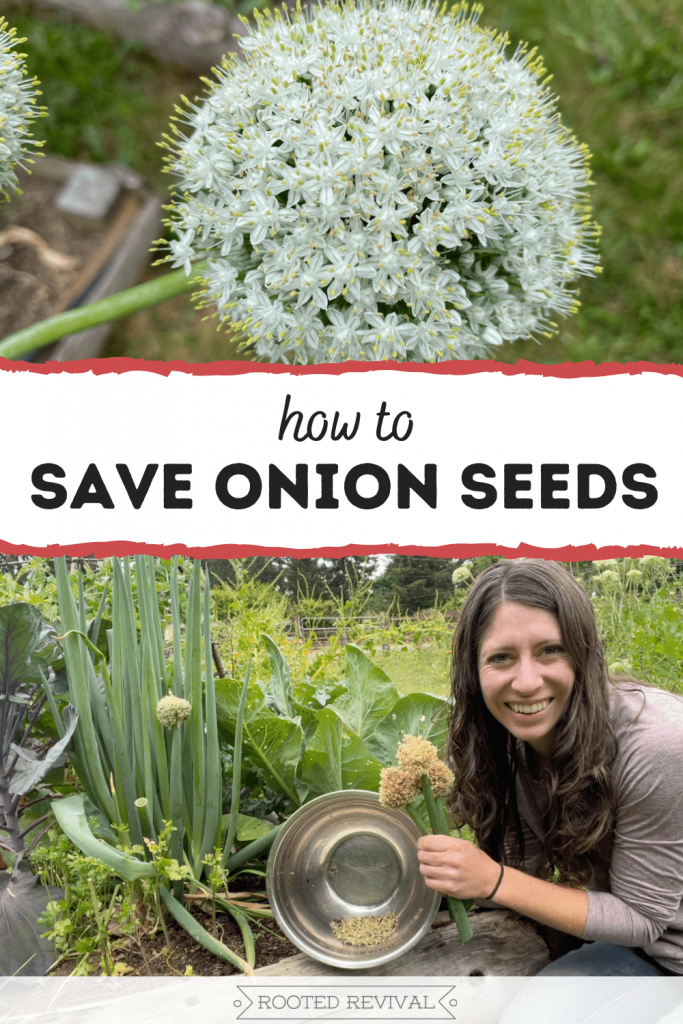You can save your own onion seeds easily! Here are the important things you need to know to successfully save onion seeds!
I was a weird kid. Well, I guess I’m a weird adult, too – so things haven’t changed a ton.
But I was so weird as a kid that I would steal bites out of onions. Like they were an apple! Just take a big ol’ chomp out of em!
Like, what?! I mean I still will eat raw onion but not like that! I at least have the civility to cut it into slices now!
Anyways, I only tell you this story to establish my deep and long-lasting love for onions. Needless to say, they are a must-grow in my garden.
But, in addition to being a “must grow” crop, they are also a “must save” seed! And here’s why!

Visual Learner?
I have a full YouTube companion video demonstrating how to save onion seeds. Check it out here!
Benefits of Saving your own Seeds:
Saving your own seeds one of the best ways that you can ensure resiliency as a gardener. It allows you a lot of freedom in selecting the traits and varieties of plants that you want to preserve, it saves you money and you’ll always be the cool person who has seeds to share!
Plus, if you do it right, you’ll honestly never have to buy seeds again… although you definitely still can. And let’s face it, you definitely will! Because you can get more fun varieties to save! And buying seeds is fun! They’re like Pokemon cards… you just wanna collect them all. At least, I think that’s how Pokemon cards worked. We weren’t allowed to have them as kids because in my fundamentalist house, those cards surely meant a demon was going to possess your soul. *shrug*
But I digress…
As I discussed in a previous blog post, there are endless benefits of saving seeds! Ultimately, saving seeds will provide you with a higher level of food security which is essential in uncertain times. It’s also just a good permaculture practice to use your resources as wisely as possibly and to reduce your dependence on external supply chains.
Luckily, savings seeds is a rather straight-forward endeavor. Most plant varieties are easy to save from, and onions are one of them. But there are a few things you should know before you start saving those seeds. So, let’s dive in!
*Some of the links in this post are affiliate links. That means that I will earn a small commission (at no expense to you) if you purchase an item. Click here of full affiliate disclosure.
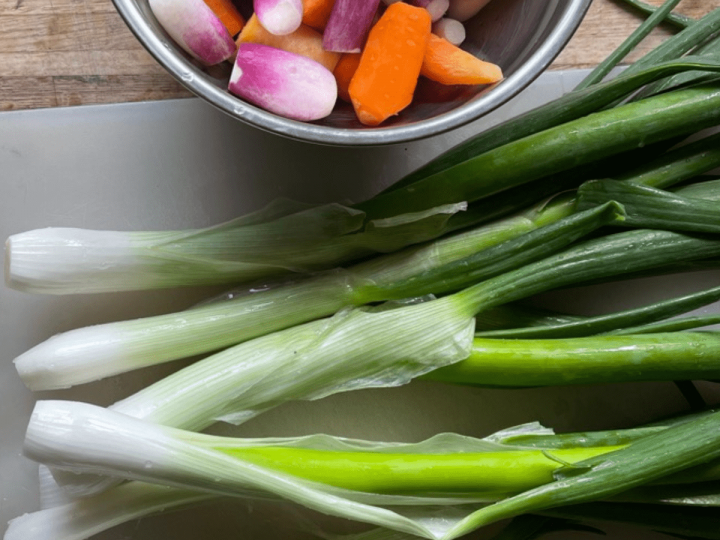
Must-Know Info Before Saving Onion Seeds:
Onions are biennials
Biennials are plants that take two years to go from planting to creating seeds. So, during the first year of life, biennials generally focus on above-ground growth and root development. During the winter, they conserve a lot of their energy and nutrients in the bulb/root. Then, once the weather begins warming up, the plant will use its stored energy to produce flowers and seeds.
For most bulb style onions, we harvest our onions after the first season when the bulb is at its best. But, if you leave them in the ground, they will produce flowers the following year. And, technically, they can produce flowers any year thereafter, too!
All allium family plants (including bulb onions, scallions, bunching onions, green onions, leeks, and chives) are biennials and won’t start producing flowers and seeds until the second warm season.
Overwintering Onions
In order for your onions to produce flowers and seeds, they will need to go through a cool season. In most regions, the onions can simply stay in the soil under a protective layer of mulch.
However, if you live in a very cold area or an area where the onion bulbs could be damaged or rot, you may need to dig up the onion bulbs in the fall. You can store them overwinter in a brown paper bag in a cool dark place (about 40oF). Then, in late winter (or early spring) once the ground is workable, you can replant the bulbs. As the weather warms up, they will begin to produce flowering stalks.
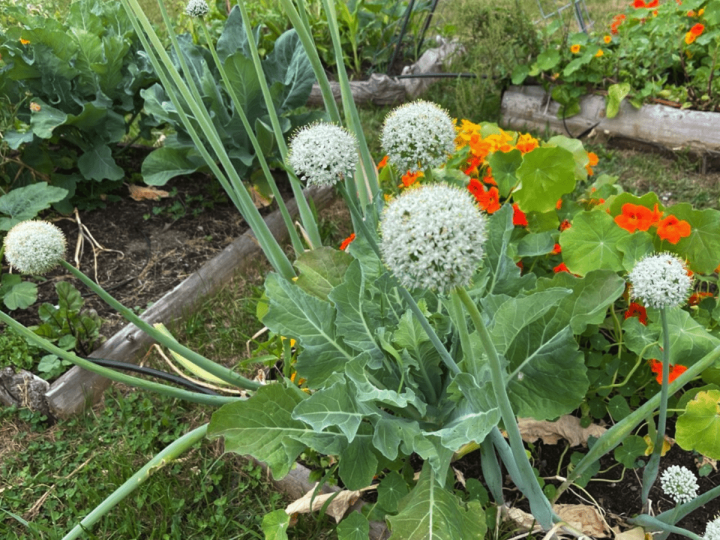
Onions can cross-pollinate
Since onions are pollinated by insects, it is entirely possible for different varieties to cross-pollinate with each other if they are blooming at the same time. Now, in order for cross-pollination to happen, the onions would need to be in the same species.
For instance, two different types of bulb onions (like a red and a white) would be in the same species (Allium cepa). Therefore, they could easily cross-pollinate with each other. But leeks are in a different species (Allium ampeloprasum), so they would not cross pollinate with the bulb onions.
Here are the broad species of onions that will generally not pollinate with each other:
- Onions (Allium cepa): this includes different varieties of bulb and potato onions. They can cross-pollinate with shallots and bunching onions, but I hear that it’s rare.
- Leeks (Allium porum)
- Chives (Allium schoenoprasum)
Because of the risk of cross-pollination, it’s recommended that you give species that can cross-pollinate a lot of space. Some seed saving organizations recommend 800 feet while other recommend at least a mile! Ultimately, if you have a small garden space, your best option will be to only allow one of the species to go to seed at a time. This will keep the seed lines pure and will help ensure that the seeds will reproduce onions that are the same as the parent plant.
Onions can become inbred
Plant genetics are fascinating! And it’s a field of study that I, as a simple gardener, only partial understand. But here’s what I do know: because we want to keep onion lines pure, there is a possibility that over time, the diversity in the family lines could be reduced. So, if you are saving seeds from a plant, replanting those seeds, saving them again, and so on for years and years, you could see what’s referred to as “inbreeding depression”.
Inbreeding depression will eventually lead to lower quality onions that don’t produce as well, have smaller bulbs or are less vigorous. There are some really great academic articles online about this if you want to geek out further.
This is really a much bigger issue for the commercial seed producer than it is for the hobby gardener. As a common gardener, the main thing you need to know is that you should introduce some new lines into your seed saving efforts every few years.
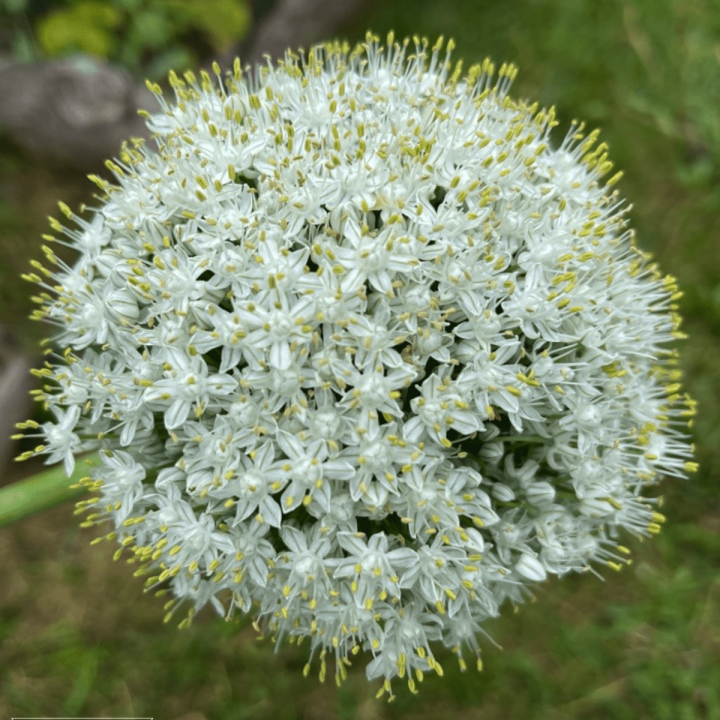
How to Save Onion Seeds
Now that we’ve gone over the basics and some of the special circumstances surrounding onion seeds, it’s time to talk about how to harvest your onion seeds!
When to harvest onion seeds:
As we discussed earlier, onions are biennial plants. So they won’t flower until the second year of their life. Once they produce flowers, you will be in awe of the gorgeous flowering heads! The round flowering heads are actually made up of hundreds of tiny flowers. Each of these flowers can produce a few seeds! These flowers will also attract some beautiful pollinators and beneficial insects to your garden!
After a while, the flower heads will start to brown and look like they are drying out. That’s because the plant is now focusing on ripening the seeds. Keep a close eye on the flowers for seed development.
Once the seeds are developed, you will start to see the tiny black seeds inside the individual flowers. Each individual flower will mature at a slightly different rate. The goal is to harvest the flower heads when most of the flowers have developed seeds but they aren’t dropping bunches of the seeds to the ground yet.
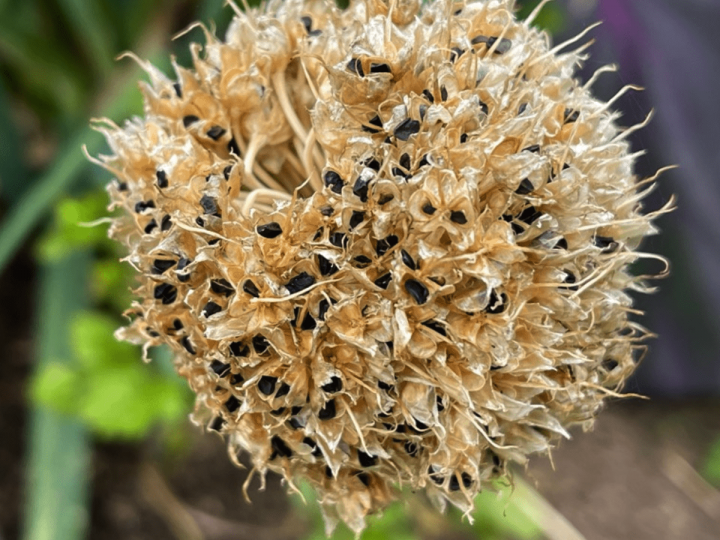
How to save onion seeds:
Once the flower heads are ready to harvest, clip the blossom about 5-8 inches down the stalk. Be gentle so that you don’t loose too many seeds in the process.
Turn the blossom head upside down over a large bowl or a brown paper bag. Shake the flowering head to help release the seeds. You may also want to use your fingers to work through the flowers to help release extra seeds. I also like to rub the seeds that are still trapped in the flowers between my hands to separate them from the flowers.
Finally, if there are a lot of seeds still left in the flowering head, you can let them continue to ripen for a later harvest. Place the flower stalk upside down into a brown bag (so the flower head is inside the bag). Tie the stalk of the flower to the bag. Keep it in a place with good airflow and out of direct sunlight. As the seeds continue ripening, they will drop from the flowers into the brown paper bag and you can collect them at a later date.
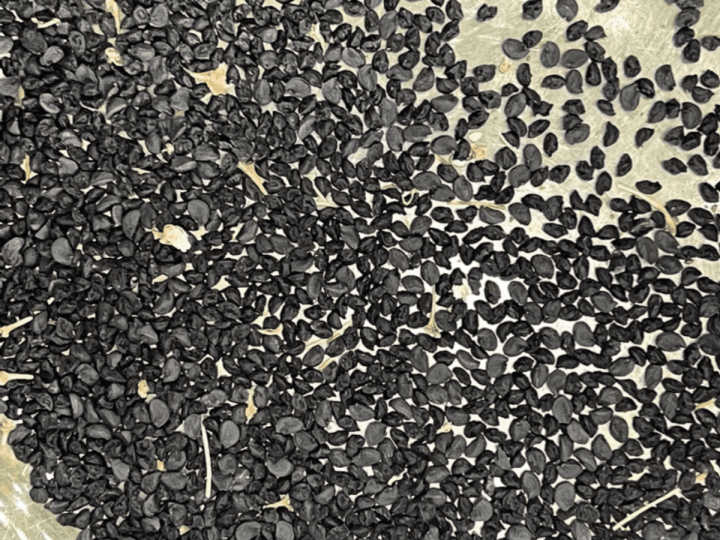
How to clean & store onion seeds:
Once you have collected your seeds, you will have a mixture of chaff (plant material) and seeds. It’s time to clean and winnow the seeds!
There are several ways to clean your seeds. I generally use a mixture of methods. You can use a strainer or colander to separate out the plant matter and the seeds. Or you can winnow them by tossing them in the air and letting the wind blow away the chaff (see my Youtube Video for a demonstration of this technique).
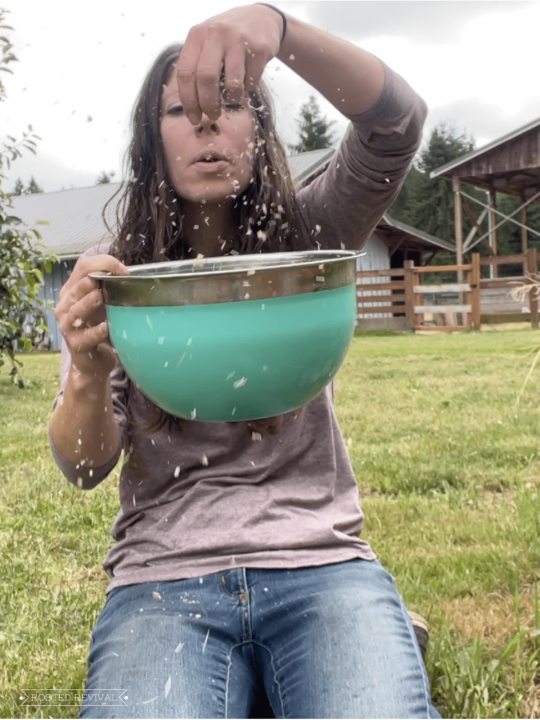
Once you have cleaned your seeds, let them air dry for a few days in a cool dark place. This will help remove any extra moisture and also give tiny bugs a chance to crawl or fly away!
Store your seeds in paper envelopes or a plastic bag. You can also use glass jars. Label the seeds with the variety and the date you collected them.
Onion seeds are usually viable for about 2 years.
Pin this post to save it for later!
